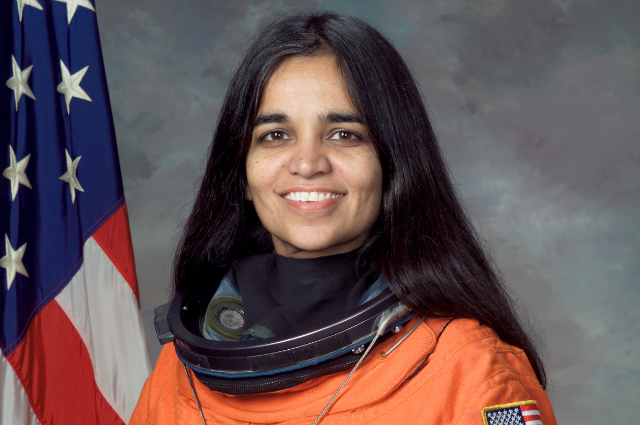Introduction
On February 1, 2003, a somber day in the history of space exploration, the NASA Columbia Space Shuttle met with a catastrophic accident during its re-entry into Earth's atmosphere. Onboard were seven extraordinary astronauts, including the remarkable Kalpana Chawla. In this article, we will delve into the details of the Columbia Space Shuttle disaster, Kalpana Chawla's exceptional life journey, her significant contributions to space science, and the profound and lasting impact of this tragic incident.
Kalpana Chawla's Early Life and Unwavering Aspiration
Kalpana Chawla, born on March 17, 1962, in Karnal, Haryana, India, defied societal expectations from a young age. Her parents, Banarasilal Chawla and Sanjyoti Chawla, had migrated from Pakistan during the partition. Kalpana, their fourth and youngest child, was initially nicknamed "Montu." Her unwavering passion for space and science was ignited by the sight of planes soaring in the sky. Accompanying her father to the local flying club, she kindled her fascination with flight and space exploration.
Despite gender biases that favoured male children in her conservative family, Kalpana's determination shone through. Her family and professors initially discouraged her from pursuing a career in aeronautical engineering, a field considered unsuitable for girls. However, her indomitable spirit led her to obtain a bachelor's degree in aeronautical engineering from Punjab Engineering College, India.
In her relentless pursuit of knowledge and dreams, she ventured to the United States, where she earned a Master's degree from the University of Texas and a Ph.D. in Aerospace Engineering from the University of Colorado. Kalpana Chawla was undaunted by obstacles and persisted in following her aspirations.
NASA and Her Extraordinary Journey to Space
In 1988, Kalpana Chawla embarked on her NASA journey, working at the Ames Research Center. Her area of expertise was fluid dynamics in aircraft. Her comprehensive knowledge and skills included piloting various aircraft, gliders, and seaplanes. In 1991, she attained American citizenship, marking a significant milestone. In 1994, NASA selected her as one of 20 astronauts for its training program, ultimately leading to her inclusion as a member of the Space Shuttle Columbia's crew.
Her inaugural spaceflight took place in the Columbia Program, where she spent two weeks orbiting Earth. As a mission specialist, her responsibilities included operating the robotic arm to deploy the Spartan satellite, designed to study the sun's outer layer. Despite facing challenges, such as the Spartan satellite going out of control, she made substantial contributions to the mission's success.
The Columbia Space Shuttle Tragedy
The fateful day of February 1, 2003, tarnished the legacy of the Columbia Space Shuttle as it disintegrated during re-entry. This tragedy unfolded despite the absence of any errors or awareness of the impending catastrophe by the seven astronauts on board. The heartbreaking video recordings of their last moments captured their obliviousness to the impending disaster.
The underlying cause of the disaster could be traced back to a small piece of foam that detached from the shuttle's external tank and struck the left wing during liftoff. While foam strikes during space shuttle launches were not uncommon, this incident proved catastrophic due to the foam's impact on a critical part of the shuttle.
NASA's Negligence and Rejection of Spy Satellites
One of the most troubling aspects of the Columbia disaster was NASA's negligence and its refusal to employ American spy satellites for assessing the damage caused by the foam strike. Engineers had requested photographs to inspect the damage post-foam incident, but their appeals fell on deaf ears. This decision to forego vital data collection ultimately led to the Columbia disaster.
An investigation unveiled that some within NASA were aware of the damage sustained during liftoff but chose not to act on this information. The Columbia Accident Investigation Board (CAIB) published a comprehensive report that exposed NASA's negligence and its reluctance to accept assistance from the Department of Defense.
Columbia Crew Survival Investigation Report
The Columbia Crew Survival Investigation Report, released in 2008, shed light on the astronauts' final moments. It concluded that cabin pressure disruption resulted in the instantaneous loss of the crew, leaving no chance for survival. Even with improved equipment, the report determined that there would have been no survivable outcome under the circumstances.
Impact and Legacy
In the aftermath of the disaster, NASA suspended the Space Shuttle Program for 2.5 years and implemented changes to prevent a recurrence of such a catastrophe. One of the most notable improvements involved redesigning the foam ramp to avoid further damage during liftoff. These modifications have proven effective to this day.
Kalpana Chawla's indomitable spirit and passion for science education left a profound and enduring legacy. She actively encouraged students from her former school in India to participate in NASA's Summer Space Experience Program, thus opening doors for countless young minds. Her legacy lives on through the naming of the Columbia Memorial Station on Mars and an asteroid in her honor.
This article pays tribute to the remarkable Kalpana Chawla and her role in space exploration while commemorating the tragedy of the Columbia Space Shuttle. Kalpana Chawla's life journey and contributions to space science continue to inspire generations and remind us of the unwavering human spirit.

